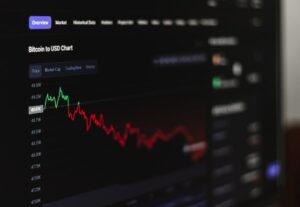Understanding Forex Correlation: What It Is and How It Affects Your Trading
Forex trading is a complex and dynamic financial market where various factors influence the price movements of different currency pairs. One of the key concepts that traders need to understand is forex correlation. Forex correlation refers to the statistical relationship between two or more currency pairs, indicating whether they tend to move in the same direction, opposite directions, or have no significant relationship at all.
In the world of forex trading, currency pairs are traded in pairs, with one currency being bought while the other is sold. For example, in the EUR/USD currency pair, the euro is being bought while the US dollar is being sold. Forex correlation helps traders understand how different currency pairs move in relation to each other, which can be a valuable tool in formulating trading strategies and managing risk.
There are three types of forex correlation: positive correlation, negative correlation, and zero correlation. Positive correlation means that two currency pairs tend to move in the same direction. For example, if the EUR/USD and GBP/USD currency pairs have a positive correlation, it means that when the EUR/USD goes up, the GBP/USD is also likely to go up. This can happen due to similar economic factors affecting both currencies or a shared risk sentiment in the market.
On the other hand, negative correlation means that two currency pairs tend to move in opposite directions. If the EUR/USD and USD/JPY currency pairs have a negative correlation, it means that when the EUR/USD goes up, the USD/JPY is likely to go down. Negative correlation can occur when there are contrasting economic factors affecting the two currencies or when traders have different risk preferences.
Lastly, zero correlation means that there is no significant relationship between two currency pairs. This indicates that the movements of one currency pair have no impact on the movements of the other. Zero correlation can be observed when the currencies involved have different fundamental drivers or when their market participants have different motivations.
Understanding forex correlation is crucial for traders because it can provide insights into potential trading opportunities and help manage risk. By identifying currency pairs with positive correlation, traders can diversify their portfolios and increase the probability of profitable trades. For example, if a trader believes that the EUR/USD is likely to go up due to positive economic data, they can also look for other currency pairs with positive correlation, such as the GBP/USD or AUD/USD, to increase their chances of making successful trades.
Conversely, negative correlation can be useful for hedging purposes. If a trader has a long position in the EUR/USD and wants to protect against potential downside risk, they can open a short position in a currency pair with negative correlation, such as the USD/JPY. This way, if the EUR/USD goes down, the losses from the long position can be offset by the gains from the short position.
However, it is important to note that forex correlation is not a foolproof indicator and should not be the sole basis for making trading decisions. Market conditions can change rapidly, and correlations that have historically held true may break down. Traders should always conduct thorough analysis and consider other factors such as economic data, geopolitical events, and technical analysis before making trading decisions.
There are various tools and resources available to help traders monitor forex correlation. Many trading platforms offer correlation matrices or indicators that display the correlation coefficients between different currency pairs. These tools can be used to identify correlations and track their historical patterns.
In conclusion, understanding forex correlation is essential for forex traders as it provides valuable insights into the relationships between currency pairs. Positive correlation can be leveraged to diversify portfolios and increase the probability of profitable trades, while negative correlation can be used for hedging purposes. However, traders should always conduct thorough analysis and consider other factors before making trading decisions. Forex correlation is a dynamic concept that requires continuous monitoring and adaptation to changing market conditions.






